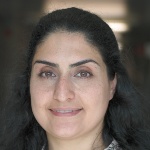Research in Project Area B
A reliable description of complex damage and- fracture evolution in fluid-filled porous media is an important challenge in a wide range of applications in science and technology. Application areas cover problems in petroleum and environmental engineering, rock and soil mechanics, and even advanced problems in biomechanics, medical and material science. Important applications that need an improved understanding of the fracture evolution from the geomechanical and the hydrodynamic point of view are the generation of energy from geo-thermal reservoirs or the injection and storage processes for carbon sequestration. Closely related are technological challenges to deal with fractured aquifers or unconventional hydrocarbon sources like hydraulic fracturing in the petroleum industry. One highly complex prototype scenario is the development and propagation of pressure-driven crack patterns in saturated or unsaturated rock formations. The initial direction of crack growth might become unstable and radial cracks spread in circumferential direction. Multiple secondary fracturing processes develop a complex fracture network defining damage zones on a larger scale.
Projects
B01: Modelling of hydromechanical fracturing across scales
Hydraulically induced fractures usually initiate at very small (microscopic) length scales and then merge to larger (macroscopic) crack discontinuities. The goal of the project is to resolve this inherent characteristic through the development of computational scale-bridging techniques for hydraulic fracturing of porous media. The project is divided in three steps: (i) Development of a general basis for the homogenization of porous media; (ii) Incorporation of a fracture phase-field at micro-scale; (iii) Incorporation of elastic-plastic effects at micro-level. The result will be a new quality in the modelling of hydraulic fracturing across length scales.
B02: Fracturing porous solids with pore content
We describe fracturing porous solids with arbitrary pore content by two basic ingredients, the macroscopic Theory of Porous Media and the phase-field approach to fracturing. Initially, the solid is treated as a brittle elastic material that is permeable for arbitrary fluids in the sense of a Darcian pore-fluid flow. Under hydraulic fracturing conditions, cracks will open depending on fluid pressure and solid strength, and the fluid flow in the cracked zones changes from purely Darcian to Stokean type. Interfaces between the solid and the pore fluid are contributing to hydraulic-conductivity and fracturing conditions.
B03: Heterogeneous multi-scale methods for two-phase flow in dynamically fracturing porous media
The propagation and bifurcation of fractures in fluid-filled porous media depends on the likewise inter-related flow in the pore space and on the mechanical displacement field in the solid matrix. Assuming that fractures cannot be homogenised but persist on a continuum-mechanical scale as sharp time-dependent interfaces, a discrete fracture-network approach is developed. The final task of the project is the construction of a multi-scale model that serves as the basis for numerical simu-lations by a moving mesh ansatz. In particular, the new approach accounts for the dynamical evolution of fractures and allows to integrate arbitrary flow processes within the fractures.
B04: Hybrid discrete-continuum models for fractured porous media: model choice and random field/network generation
Fractured porous media are geometrically very complex. There are many competing model concepts to represent their structure in flow simulations; these models differ drastically in their level of geo¬metric detail and in their level of simplification and abstraction. Systematically choosing between these vastly different models, calibrating chosen models and specifying their predictive uncertainty is far from trivial. The goal of this project is to tackle the interlocked model-selection-and-calibration problem. Achieving this goal requires a list of algorithmic developments in the field of simulation-based Bayesian statistics.
B05: Hydromechanics of fractures and fracture networks. A combined numerical multi-scale and experimental investigation
We characterise static and evolving fluid-saturated fractures and fracture networks with high-resolution X-ray Computed Tomography. Besides the characterisation of the geometries of fractures, we aim for the quantification of the fractures’ apertures. This allows for the characterisation of hydro-mechanical coupling effects and the validation of combined numerical investigations. The experiments are performed in an X-ray-transparent triaxial cell under defined confining pressure and axial stresses. The experimental results are the basis for the adjacent quantification of coarse-grained effective material properties.
Contact

Samaneh Vahid Dastjerdi
Dr.-Ing.Postdoctoral Researcher, Management, Project MGK, Central Project Z

Kundan Kumar
Prof.Mercator Fellow, Research Project B03



